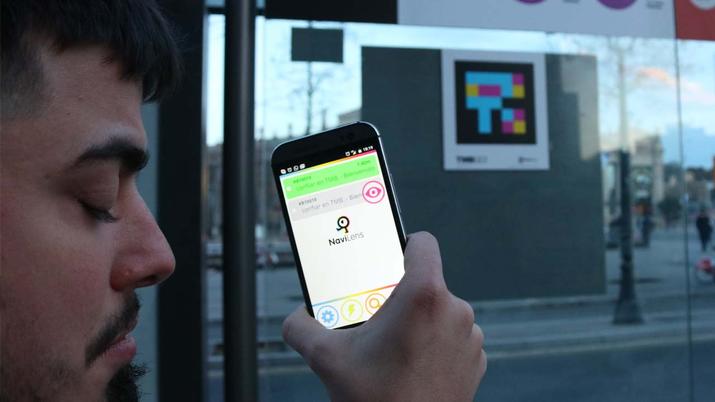There are certain elements that are among us but we never know what they mean. We become familiar with their existence, but we do not go further if we do not need to know what they are for. The same thing may have happened to you with a type of QR code, but in color, which is increasingly found in more and more places.
These colored QR codes have a very important mission in society, trying to have more inclusive cities and ensuring that technology can help the integration of people with disabilities.
Have you seen a colored QR?
«A person with a visual disability would have to be able to read a QR code«. A solution arose from this problem and that is precisely what those colored QR codes that you can see on food, transportation, etc. are for.

The technical name for these visual signals is NaviLens. These have the same purpose as a traditional black and white QR: to take us to a source of information, but they also have a series of advantages over them. First of all, users do not need to know precisely where they are placed, simply scan with the mobile camera and obtain the necessary contextualized information.
Another advantage is that this system can be read from 12 times further away than traditional QR and barcode, about 15 meters, in addition to being able to be scanned really quickly thanks to the combination of colors and shapes that make them up. It also means that they can be read in worse conditions than traditional ones, with a wide angle up to 160º and in all light conditions, in addition to being able to be read without having to focus. something essential for people with visual disabilities.
An app to “see” the world
These NaviLens codes can be read with a specific application that visually impaired people can install on their smartphone so that their mobile phone camera acts as a guide and indicates what is in the world around them but they cannot see. NaviLens colored QRs help make cities smarter and more inclusive.
The capabilities of this code allow users to interact in a simpler and more accessible way with their surroundings in places such as subway stations, bus stops and museums or public buildings. When using the camera through the app, Navilens reports the distance at which the tag is. In addition to the distance, it also indicates the angle of inclination of the label and can even detect many simultaneous labels, presenting them comfortably to the user.
If until now you have not wondered what these colored QR codes are, you may not know their origin either. They are created by the Murcian company Neosistec, following the advances of the Mobile Vision Research Lab of the University of Alicante. They are available every day in more and more places, from the New York Metro to those in Madrid and Barcelona, the Murcia tram, the Almudena Grandes-Puerta de Atocha Station in Madrid, hospitals and other public services. Little by little, many food companies are also betting on its inclusion so that nutritional information is available to consumers even if they have visual disabilities.












